
Here's #SolarEclipse2017 views of totality in Nebraska! Take a look here and watch our live show for more: https://t.co/cOKssim1bY pic.twitter.com/qFgqf3ZI2s
— NASA (@NASA) August 21, 2017
Eclipse chasers and amateur star watchers alike converged in cities along the path of totality, a 70-mile (113-kilometer) wide swath cutting through 14 US states, where the Moon briefly blocked out all light from the Sun.
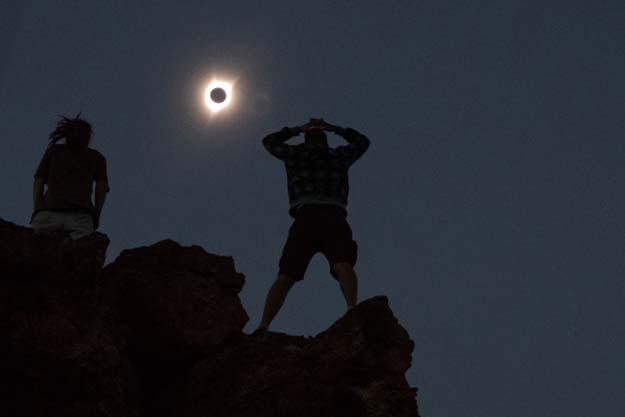
Festivals, rooftop parties, weddings, camping trips and astronomy meet-ups popped up nationwide for what NASA expected to be the most heavily photographed and documented eclipse in modern times, thanks to the era of social media.
Whoops and cheers rose from the crowd as totality began over Oregon, and similar cries of joy erupted roughly 90 minutes later when the phenomenon ended at 1848 GMT in Charleston, South Carolina.
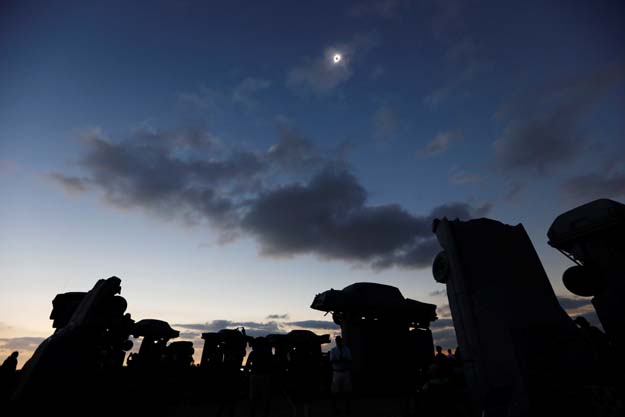
"It was incredibly beautiful. I am moved to tears," said Heather Riser, a 54-year-old librarian from Virginia, sitting on a blanket in Charleston's Waterfront Park where thousands had gathered on the grass to watch.
Crowds in Lincoln Beach, Oregon were first to witness the partial phase of the Great American Eclipse.
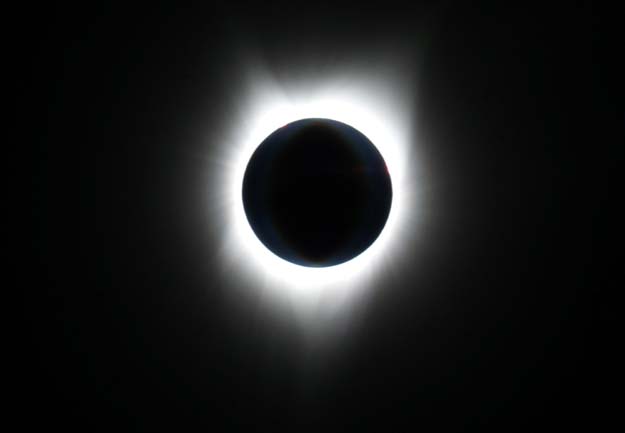
Just inland, more than 100,000 people gathered at Madras, Oregon -- typically a town of 7,000 -- in what experts described as perfect viewing conditions.
In Los Angeles, "oohs and aahs" emanated from the crowd of thousands of people gathered at the Griffith Observatory in the hills above the city as the partial eclipse began.
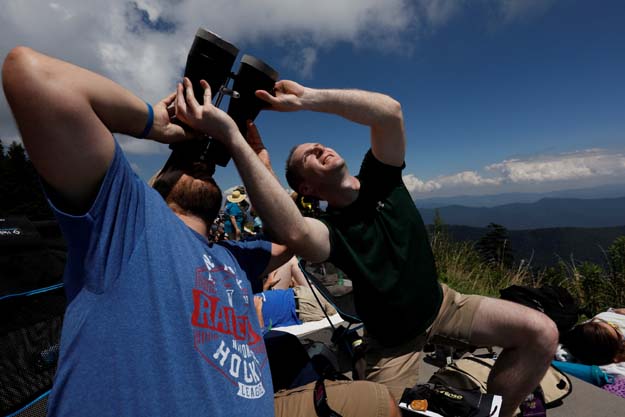
Facts about the US solar eclipse on August 21
"This is a once in a lifetime event," said 42-year-old Chad Briggs. "We have to start eating salad and be healthy if we want to make it till the next eclipse!"
Many had hiked to the site to avoid massive traffic jams. Some watchers had fashioned their own pinhole projectors out of cardboard and scotch tape.
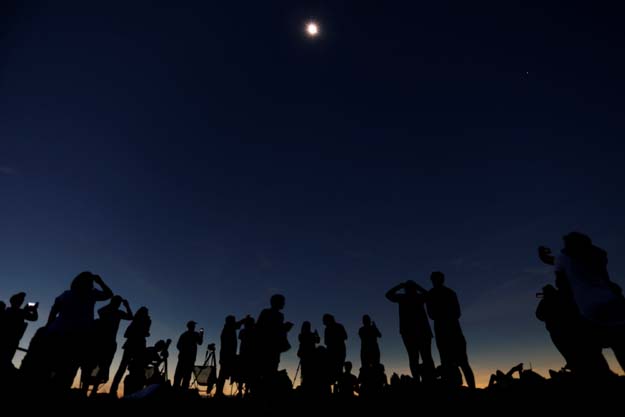
In Mexico, where there was a partial eclipse, astronomy buffs set up telescopes fitted with special sun filters in parks and squares in various cities.
"Put down your smartphone and experience this one emotionally, psychologically, physically, rather than just through the screen," advised prominent US astrophysicist Neil DeGrasse Tyson.
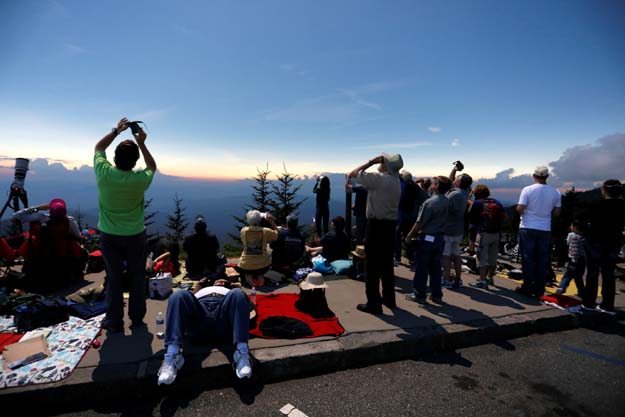
In the US capital, where 81 per cent totality occurred, President Donald Trump watched the partial eclipse from the White House with his wife Melania and son Barron.
At one point, Trump glanced skywards without protective eyewear -- a big no-no, according to experts. "Don't look," an aide shouted to him. He later donned glasses.
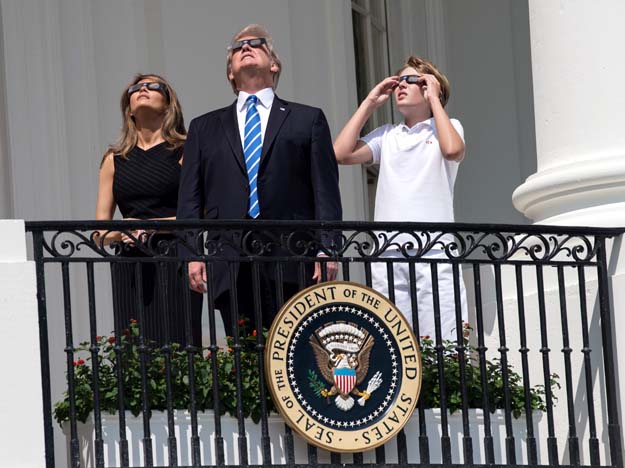
Eclipse watchers flocked to Washington's National Air and Space Museum, where solar telescopes were set up for the occasion.
The National Zoo staged a viewing party, and national parks across the country organized programs for children.
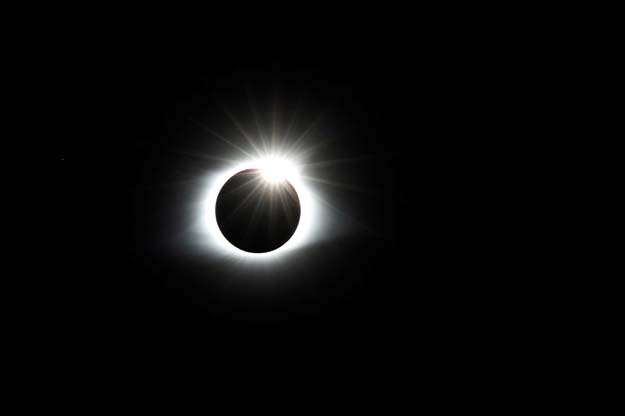
In downtown Charleston, the last point in the path of totality, crowds of tourists -- some in special eclipse T-shirts and star-printed trousers -- had staked out prime spots on the bustling city's storied waterfront.
"It is very exciting," said Kwayera Davis, 34, an adjunct professor at the College of Charleston who set up viewing telescopes.
One bar had installed outdoor speakers which blasted Bonnie Tyler's mega-hit "Total Eclipse of the Heart" -- which she also performed live on a cruise ship on Monday.
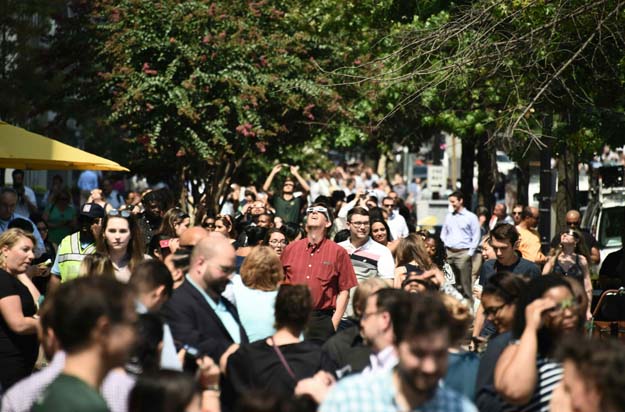
Many eclipse-watchers are overcome by emotion as the sky goes black, birds return to their nests and the air chills.
"It is such an incredible, sensory-overload kind of event," eclipse-chaser Fred Espenak, a retired NASA astrophysicist, told AFP of the first total solar eclipse he saw in the United States back in 1970.
Experts warn that looking directly at an eclipse can cause permanent eye damage.
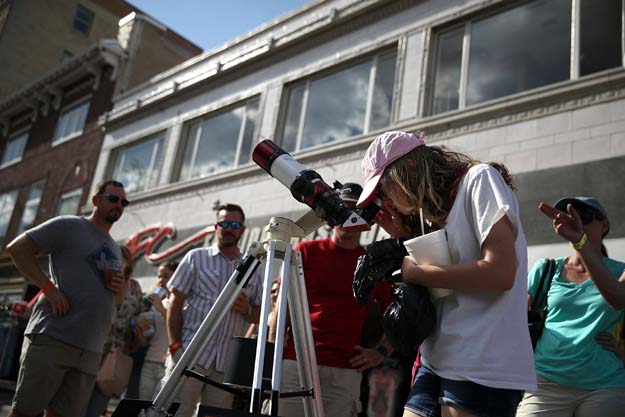
"The damage can really be permanent and right smack in the center of their vision," said Vincent Jerome Giovinazzo, director of ophthalmology at Staten Island University Hospital, Northwell Health.
The only safe time to look at it is for those within the path of totality -- and only during the brief moments when the Sun is completely blocked.
Everyone else should use proper solar eyeglasses, which are far darker than regular ones, or make a pinhole projector to see the eclipse while avoiding the glare of the Sun.
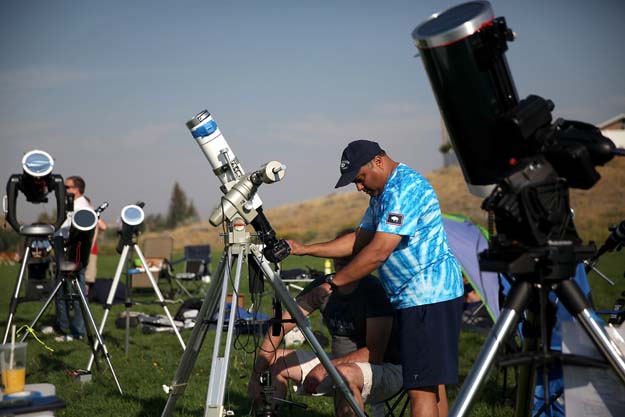
Cloudy weather and thunderstorms dashed viewers' hopes of a clear view in some places, including Missouri.
Some of the clearest views were along the West Coast.
Scientists planned to study the eclipse to learn more about the super-hot corona, or outer edge of the Sun.
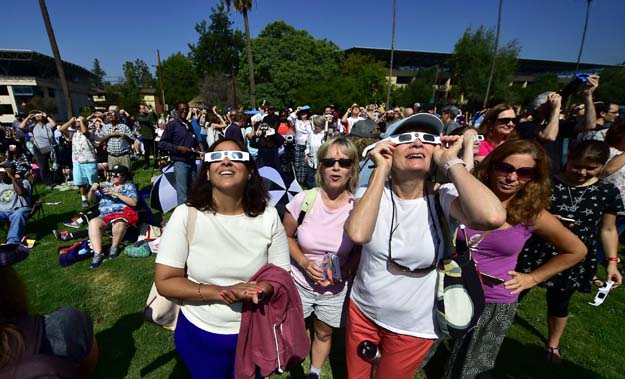
Astronauts orbiting the Earth aboard the International Space Station were planning to document the eclipse, which they were in line to see three times.
"My first solar eclipse from space... We're ready!" Italian astronaut Paolo Nespoli tweeted ahead of the event.
You probably saw #SolarEclipse2017 from Earth...but what did it look like from space? Check out these @Space_Station views: pic.twitter.com/6uPdyRFbXs
— NASA (@NASA) August 21, 2017
Eclipses = historic science. Past eclipses enabled scientists prove Einstein’s theory of general relativity & more: https://t.co/lXavPVU76a pic.twitter.com/BasKuurStu
— NASA (@NASA) August 21, 2017
1732503274-0/Untitled-design-(43)1732503274-0-405x300.webp)
1732501636-0/Untitled-design-(42)1732501636-0-165x106.webp)

1732498967-0/Outer-Banks--(1)1732498967-0-165x106.webp)
1732086766-0/BeFunky-collage-(74)1732086766-0-165x106.webp)





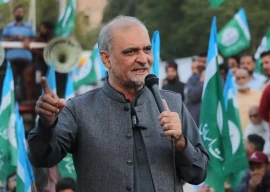






COMMENTS (2)
Comments are moderated and generally will be posted if they are on-topic and not abusive.
For more information, please see our Comments FAQ